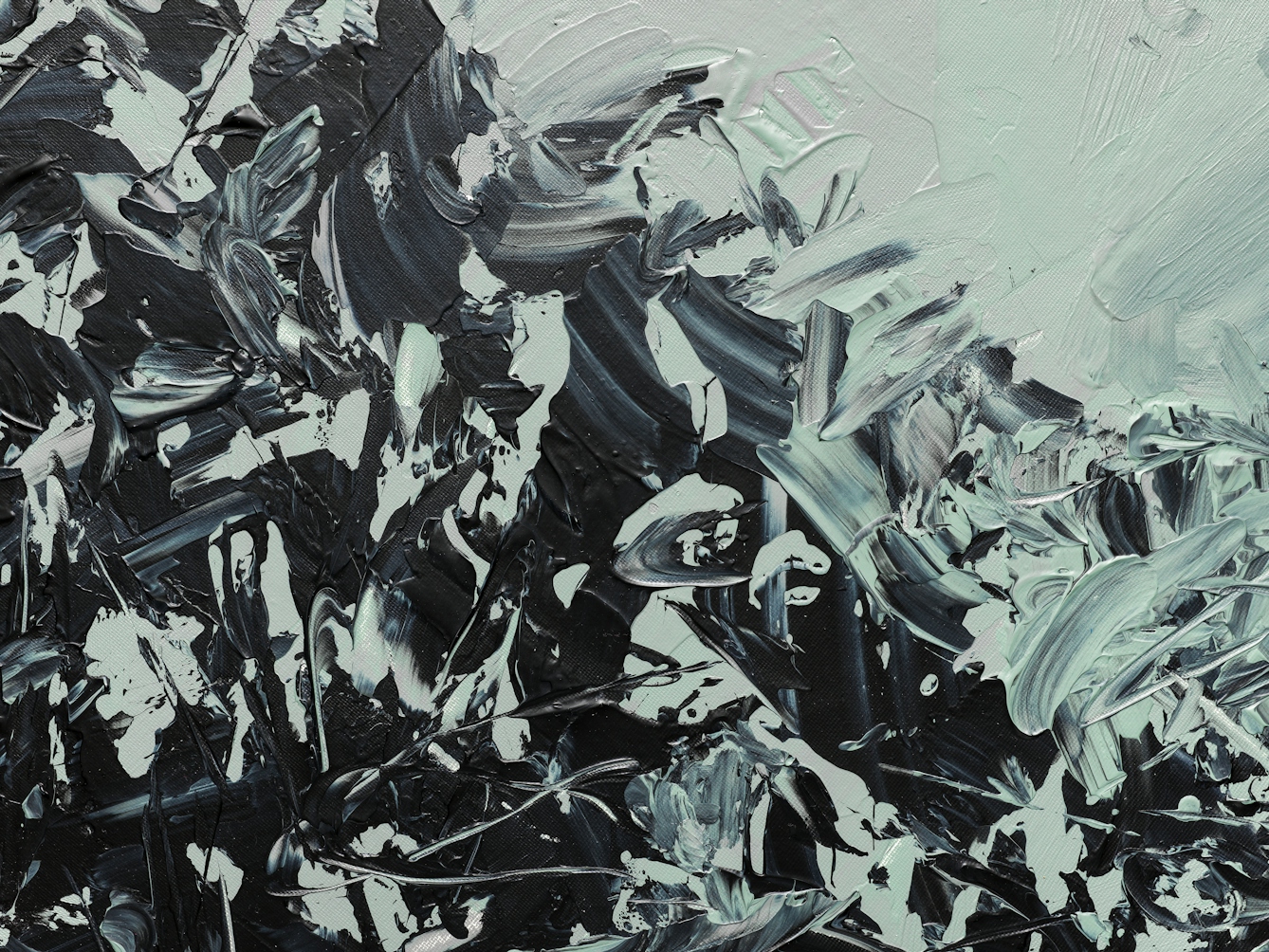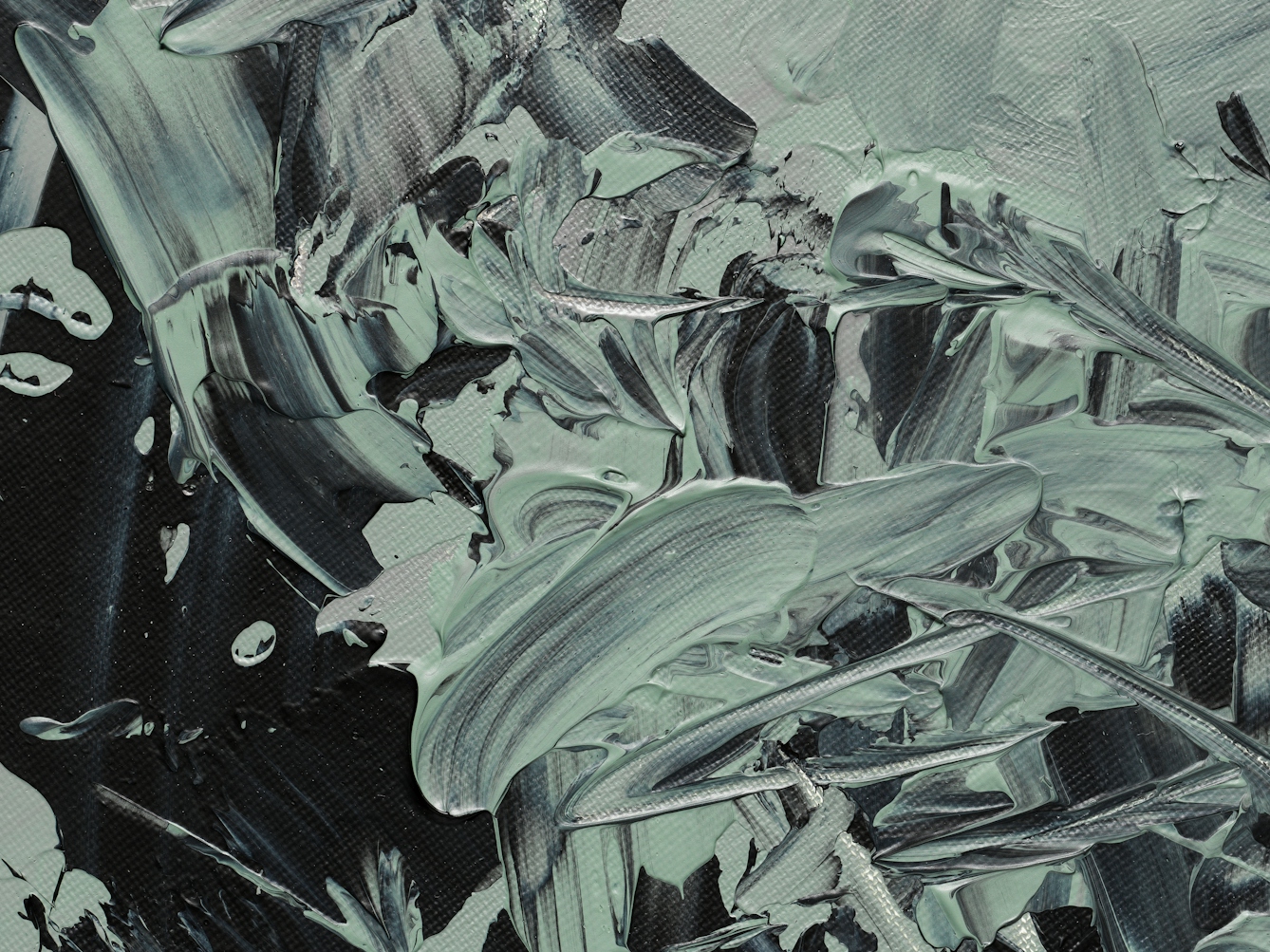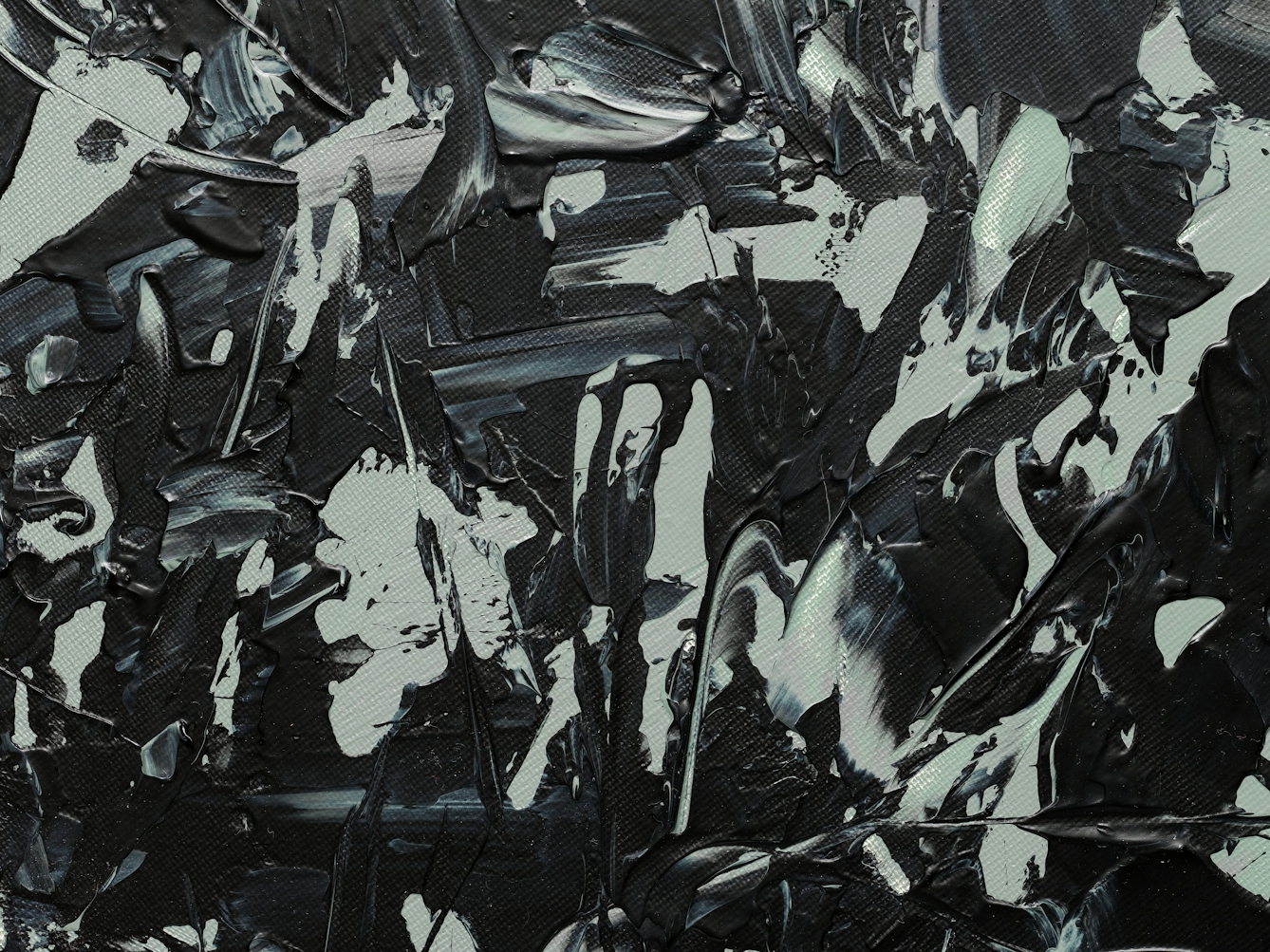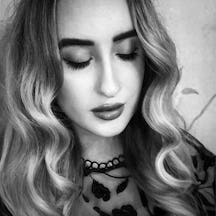Caroline Butterwick has always been partially sighted, but she hasn’t always used a cane. Now that she does, she realises that it makes her feel different and look more obviously disabled. In the first of a series of six articles, Caroline explores the idea of disability as performative, and the pressure to act out what we think others expect.
Performing my disability
Words by Caroline Butterwickartwork by Kimberley Burrowsaverage reading time 7 minutes
- Article

Fumbling in my shoulder bag as I wait for the bus, my skin snags on the black grippy handle of my long white cane. I glance around, wondering if anyone is watching, invisible to my eyes. I take out the cane, unfold it, and like a magician pulling tricks from their bag, I am transformed into someone else: a visually impaired person.
When the bus comes into view, silhouetted against the grey winter sky, I step forward and wave out an arm to hail it, long white cane in my other hand. I wonder if I am a strange sight – if I’m doing something that people don’t expect of a visually impaired person.
While I’ve always been partially sighted, I haven’t always used a cane. In my early 20s, I began using a guide cane, which helped with finding obstacles, but mainly acted as a symbol of my lack of sight. I was fed up with bumping into people, having to apologise for seeming so clumsy.
Once I started to use a guide cane, I immediately noticed that it was easier to get around. Most people would recognise that I wasn’t being rude, and my cane was shorthand for why I might need help finding the right bus or a product in a shop. Still, as helpful as it can be, it makes me feel different, conscious of myself as a disabled person.
I started using a long white cane during the pandemic. Suddenly, I felt the need for space and patience more than before. I figured my long cane was more recognisable than my shorter guide cane.

“I often think about the idea of disability as performative, and how we tend to act out what we think others expect.”
There are three main types of cane that visually impaired people can choose. The symbol cane is the shortest, showing to others that the person using it has reduced vision. The guide cane – the first I opted for – symbolises visual impairment, but can also be used for finding obstacles, such as judging the depth of steps.
Then there’s the long cane, the one most of us associate with visual impairment, where the person sweeps the ground in front of them to feel their way. Of course, many visually impaired people choose not to use a cane at all. It took me a while to feel confident enough to use one – and even now, I still hesitate.
Sometimes I hold my long cane simply as a symbol, but I also use the traditional sweep of it. I wondered if I needed to, if it made me seem more visually impaired than I am. Walking back from the pub one night, I was using my long cane to feel out the ground in front of me, and my husband commented that I was walking quicker and more confidently than usual. So I’ve kept at it.
Writing the performance
I often think about the idea of disability as performative, and how we tend to act out what we think others expect. Sometimes I sense I have failed to meet these expectations, which leaves me feeling even more self-conscious.
Alongside my visual impairment, I’ve also experienced mental ill health. This can bring paranoia, an immense sense that everyone is looking at me. Here, my visual impairment and mental illness intersect cruelly: am I a spectacle, or am I invisible?
There’s a version of me who’s first on the dance floor and a version who’s too anxious to leave the house. There are other versions of me that slip between the two. I’d like to make sense of my dissonant selves. Maybe writing can help.

“I take out the cane, unfold it, and like a magician pulling tricks from their bag, I am transformed into someone else: a visually impaired person.”
“Write what you know” is a popular, albeit contentious, piece of advice. And oh, I do. I write myself in stories, in journalism, in my research. Through this, I hope others gain an insight into my life, and that it helps me understand myself better. And writing is a performance – I choose what to share.
Through my articles, I am showing – or trying to show – a side of myself I hope others interpret a certain way. I’m conscious of the reader taking meaning from my words, conjuring an image of me that I hope to have some control of, but exists beyond me. Words take on a life of their own.
Binaries and performance
We’re used to the idea of binaries in illness – you’re either well or you’re not. In her beautiful essay ‘On Being Ill’, Virginia Woolf writes that, when we’re unwell, “we cease to be soldiers in the army of the upright; we become deserters”. It’s something I’ve experienced at times of mental illness, a sense of being separate from the rest of the world.
Woolf penned the dreamy phrase “sky-gazer” to describe how being unwell can give a welcome opportunity to muse. When I was particularly ill, no longer part of the “army of the upright”, I remember sitting up in my hospital bed and delighting in the sunny yellow of the room and the way the curtains billowed in the breeze. I breathed in the syrupy sweetness of the air, and I wrote and wrote, ideas blessedly streaming again.
Healthy and sick seem like opposites, but we can slip between them, or occupy both lands.

“Sometimes I hold my long cane simply as a symbol, but I also use the traditional sweep of it. I wondered if I needed to, if it made me seem more visually impaired than I am.”
A few short weeks before, thin and tired and withdrawn, I would have looked more typically unwell. Healthy and sick seem like opposites, but we can slip between them, or occupy both lands. And again, performance comes in – how others perceive us as belonging to one side of that binary, their confusion when they see it’s not that straightforward, and how we can sometimes find ourselves altering our behaviour to conform to those expectations.
As I wrote from my hospital bed, full once again of inspiration that illness had sucked from me, I reflected on where I was: the routines of hospital life, the people around me, but also, how I felt I was returning to me.
I didn’t know that I was about to face a year and a half of disruption, courtesy of my misfiring mind. Months later, sitting with my notebook in the hospital café during another admission, did I look well? Even as I struggled to pen more than a prosaic description of my day, I felt I was performing something normal to me. This was in part for my own benefit, as if I was tricking myself into thinking things were okay.
An ongoing journey
I take off my winter gloves, slip on my face mask, step onto the bus, scan my pass, thank the driver. I’m aware of my every movement as I navigate the aisle to two empty seats. I get out my phone from its designated pocket in my shoulder bag, holding it close to my face so I can read the news, something – like many of us – I do often these days. As I scroll, I am so obviously using my eyes.
Soon I’ll be in the warmth of my favourite coffee shop in town, aware of how odd it might look to walk in holding a cane, and then sit down with a notebook and pen. Maybe, as jazz plays and the milk frother whirrs, I’ll make more sense of this, piece by piece, as I write myself.
About the contributors
Caroline Butterwick
Caroline Butterwick is a writer, researcher and freelance journalist based in North Staffordshire. She’s currently working on a nonfiction book proposal, and her freelance journalism has featured in a range of publications, including the Guardian, the i paper, Mslexia, and Psychologies. She is studying for a PhD in Creative Writing that explores the power of memoir as a counternarrative to dominant models of disability, funded by the Arts and Humanities Research Council/Midlands4Cities.
Kimberley Burrows
Kimberley is a blind abstract expressionist artist from Salford, Greater Manchester. An intuitive approach to her practice explores the complex themes of blindness, mental health, and art as therapy through performative mark-making. Kimberley is keen to understand the relationship between artist and medium, beyond the scope of vision, and the various health benefits that art can cultivate. Kimberley is a passionate advocate for accessibility and inclusion, which are both at the forefront of her social media presence. Kimberley, who will undertake a Master's degree in painting at the Royal College of Art, London later this year, has been featured in BBC Look North, Manchester Evening News, ITV News, the Daily Mail, and Marie Claire, among others.

